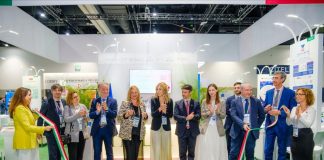The industrial lighting reconstruction with an energetic purpose is of great importance for the pharmaceutical industry, strongly regulated and presenting the need for a tracked and controlled production.
In the case of clean rooms, lighting reconstruction must meet the following requirements:
- Hygienic design: smooth and well-worked surfaces are needed. A high degree of IP protection serves to ensure that moisture and dust developed during production do not penetrate the luminaire housing.

- Resistant surfaces: in compliance with the regulations it is mandatory to clean and / or disinfect systems installed in a clean room regularly. Consequently, it is important to choose materials that resist direct contact with aggressive detergents, that are biologically robust and that do not pose a danger to finished products. Preliminary evaluation of the planned operating hours is essential among the preliminary activities.
In the simplest cases is not necessary to consider applications related to presence sensors, lighting sensors, time programming, exploitation of natural light.
Economic evaluation of lighting reconstruction
The economic aspects to be considered for the lighting reconstruction are mainly linked to the economic savings due to the reduction in electricity consumption. The estimated cost is however subdivided on the 4 macro items related to the project:
– project management: it is estimated on the basis of previous projects for technology affinity, project size and geographic location of the plant.
– design: it is estimated according to the size of the plant to be built taking into consideration a minimum amount linked to the designer’s fixed costs for lighting calculations.
– supply and installation of the plant: it is estimated starting from the customer’s separate system in terms of:
- number of lighting fixtures present;
- power;
- field of application of the plant;
- current system status.
On the basis of this information, the economic value of supply and installation is estimated using the internal price lists and comparison plants produced as a reference. The installation cost is estimated using internal parameters modified in percentage according to the installation conditions.
– measurement system: the process of estimating the components of the measurement system is divided into two sequential phases. The first one involves the evaluation of the number of electrical panels included by performing a fixed economic estimate associated with each electrical panel, while the second is estimated by performing a precise analysis for each framework also onsidering:
- dislocation of the paintings on the plans;
- presence of a general light framework;
- number and type of switches involved;
- amperages and structure of the internal wiring of the switchboard (Ex-ante measurement campaign);
- presence of Wi-Fi networks for wireless communication;
- presence of wired Ethernet networks.









